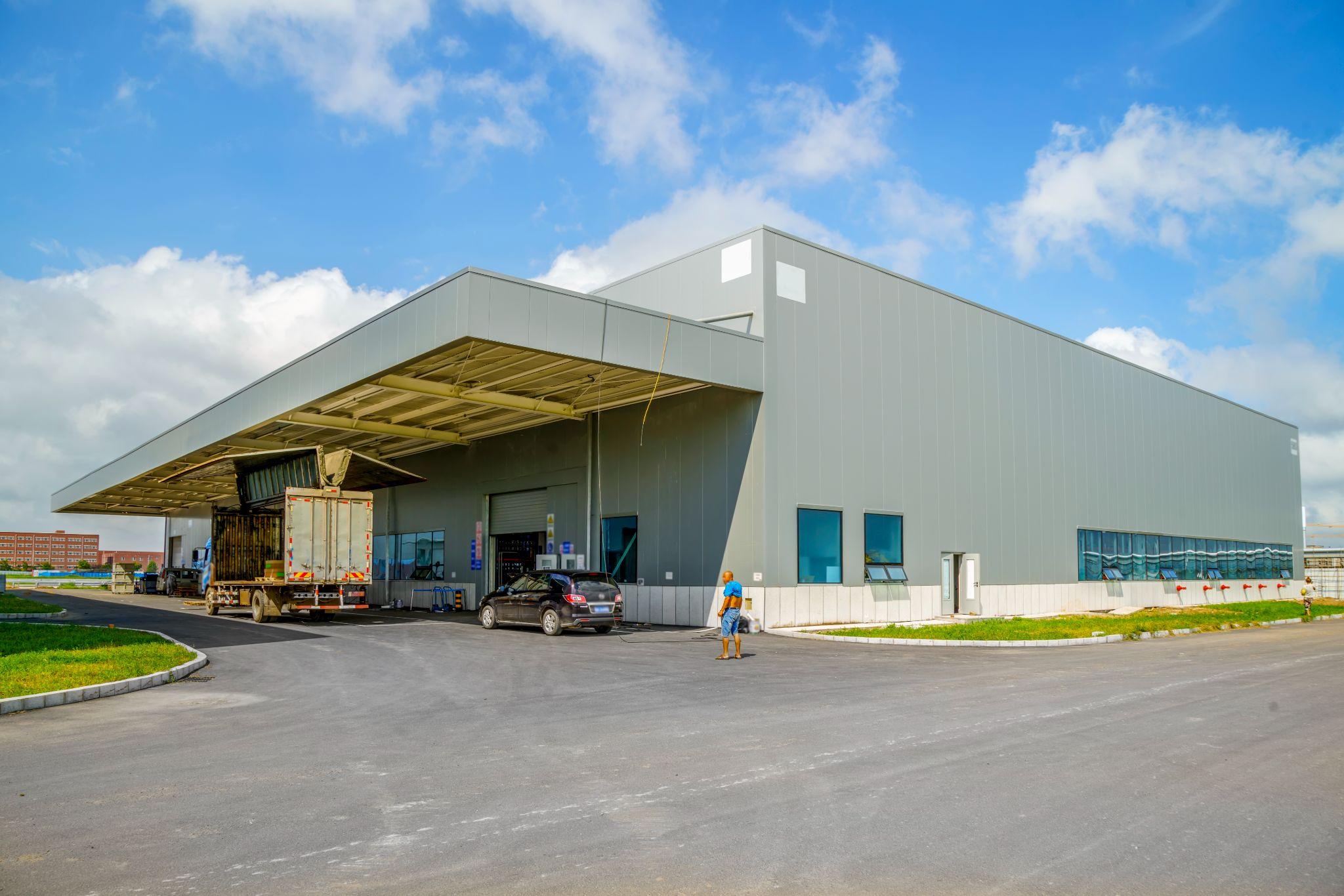Commercial vs Industrial Real Estate: The Smart Investor’s Guide to Profitable Investments

Both sectors offer promising avenues for high returns, but they come with their unique sets of challenges, market dynamics, and potential profits. And let’s face it, these nuances can be as confusing as assembling furniture from a certain Swedish store—lots of parts, plenty of complexity, and the nagging feeling that you might be missing something critical.
This comprehensive guide aims to demystify these two investment behemoths, offering actionable insights into market dynamics, profitability, and risk factors. So fasten your seatbelt; we’re about to turn you into a savvy investor, one insightful nugget at a time.
Commercial Real Estate: Market Insights and Investment Potential

And let’s talk about the elephant in the room: profitability. Depending on your investment strategy, investing in a commercial property like an office space could be your golden ticket to long-lasting wealth. This section is your go-to resource for making sense of the dizzying array of options, profitability potential, and associated risks.
You may also like: Commercial Property Auctions: A Practical Guide for Investors
Market Dynamics in Commercial Real Estate
Unveiling the forces behind commercial properties is akin to unmasking a magician—it’s essential for understanding how to pull a rabbit (or in this case, profits) out of a hat. These factors can affect the price and profitability of commercial properties:
Economic Indicators
Keep an eye on both unemployment rates and interest rates, as these are bellwethers of property valuation. High unemployment can reduce demand for office space, while low interest rates can make borrowing money for investment more attractive.
Consumer Demand
The principle here is straightforward—high consumer demand usually means high rent. Commercial spaces like retail stores and office buildings can become cash cows when located in high-demand areas.
Geopolitical Factors
International politics have an uncanny ability to disrupt domestic tranquility. Trade wars, for instance, can lead to vacancies in retail spaces if consumer prices surge.
Market Health
The economy’s overall vitality profoundly influences commercial real estate. During boom periods, expect valuations to skyrocket. Conversely, recessions can send valuations tumbling down.
Types of Commercial Properties and Profitability

Retail Spaces
Shopping malls, boutique stores, and car dealerships all fall under retail. Each offers varying degrees of profitability, depending on factors like location and consumer demand.
Office Spaces
Office buildings are classified into Class A, B, and C properties, each with its own risk and reward profile. Class A properties, for example, often come with higher rent but also higher maintenance costs. On the other hand, Class B properties may generate rents that are consistent with the markets.
Specialized Properties
Data centers and telecom facilities are specialized properties requiring niche expertise. The barriers to entry are high, but so are the potential returns, given the increasing reliance on data and telecommunication services.
Risks and Benefits of Commercial Properties
Investing in commercial properties isn’t all sunshine and rainbows; it comes with its share of clouds. Here’s what you can expect when you invest in them:
High Initial Costs
Commercial properties often require significant upfront investment. You’ll need to account for this in your real estate investment strategy.
Tenant Vacancies
A vacant property is a liability, not an asset. It’s crucial to have a plan for finding and retaining reliable tenants.
Market Volatility
Economic downturns can be brutal for commercial real estate, leading to a drop in rental income and property valuation.
Long-Term Benefits
On the flip side, long-term leases and triple net leases can offer stable, long-term income streams, balancing out the initial investment costs.
Understanding Industrial Real Estate Investment

In this section, we look into the fundamental elements of industrial real estate, discuss the unique market dynamics that govern it, and explore the types of properties that can offer promising returns.
What Constitutes Industrial Real Estate?
The settings might not be glamorous in industrial real estate, but the functions they perform are essential. They’re the gears that keep the economic machine running smoothly. This section categorizes the various types of industrial properties to simplify your investment decisions.
Heavy Manufacturing Buildings
Heavy manufacturing properties are often large, specialized structures designed for mass production or as a warehouse space or storage space for heavy equipment. They are equipped with the kind of specialized equipment and facilities that can handle heavy machinery and assembly lines.
Warehouse Space
Ideal for storage and distribution, a distribution warehouse serves as the logistical hubs for a myriad of businesses.
Data Centers
A data center is a specialized facility designed to house and manage a large amount of computer servers and related equipment. The increasing demand for cloud storage and data processing has elevated data centers from highly specialized industrial buildings to mainstays in industrial real estate.
Flex Buildings
These properties combine elements of commercial and industrial space, like mixing a bit of office space with storage or light assembly capabilities.
You may also like: Your All-In-One Guide to Navigating Mortgage Loans
Market Dynamics Unique to Industrial Real Estate

Supply Chain Changes
Shifts in the global supply chain can significantly affect demand for warehouse and distribution facilities, adding a layer of complexity to location decisions.
Technological Advancements
As the industrial sector integrates more advanced technologies, the types of properties in demand are evolving, affecting profitability and risk.
Consumer Behavior
The rising prevalence of e-commerce is affecting the types of industrial real estate properties that are most profitable, like distribution warehouses and storage spaces.
Types of Industrial Properties and Potential Profitability

Distribution Warehouses
These intermediary sites store goods before shipping them out to consumers. With the rise of online shopping, distribution warehouses in an industrial property are more crucial than ever.
Cold Storage Facilities
These specialized warehouses are used for storing perishable items under controlled conditions. As consumer demand for fresh goods grows, so does the profitability potential of these properties.
Telecom Switching Equipment
Specialized facilities for telecom companies as industrial tenants are on the rise, offering a niche but increasingly lucrative investment opportunity in the industrial real estate sector.
Analyzing Investment Metrics in Commercial and Industrial Real Estate

Return on Investment (ROI) in Commercial Properties
When it comes to commercial properties—be it retail stores, office spaces, or anything in between—calculating Return on Investment (ROI) is more than just a simple formula. It’s a combination of various financial and situational factors that tell the story of potential profitability.
Understanding ROI in this domain is crucial as it directly impacts your long-term revenue and short-term cash flow. Let’s dissect the vital components that contribute to a compelling ROI in commercial properties:
- Rental Income: A significant portion of your ROI comes from the rent paid by tenants using an office space, for example. Rental income can be particularly stable in commercial properties, especially when long-term leases are involved.
- Property Appreciation: Over time, commercial real estate generally appreciates, adding to the ROI.
- Tax Benefits: Commercial properties often come with depreciation benefits and other tax incentives, elevating the total ROI.
ROI Metrics in Industrial Real Estate

Factors like the type of industrial activities, tenant longevity, and square footage utility play a huge role in shaping your returns. Let’s look at those complex elements to give you a well-rounded understanding:
- Tenant Longevity: Industrial tenants often sign long-term leases and have specialized equipment, making them less likely to move.
- Square Feet Utility: The sheer size of industrial properties often allows for diverse usage, from warehouse space to manufacturing plants, increasing income streams.
- Heavy Manufacturing: The heavy manufacturing sector is a significant contributor to ROI, especially in areas with booming industrial activities.
Capitalization Rate: What Does It Mean?
The term “capitalization rate” or “cap rate” might sound intimidating, but it’s a cornerstone metric in both commercial and industrial real estate. Essentially, it’s a number that gives you an idea of how quickly an investment will pay for itself. Understanding the differences in cap rates between commercial and industrial sectors can save you from future investment pitfalls. Here’s how they diverge:
- Commercial Properties: Cap rates in commercial real estate generally reflect the risk associated with the property. Lower cap rates usually indicate lower risk but potentially lower rewards.
- Industrial Properties: In the industrial sector, cap rates might be higher due to the specialized nature of the properties. However, this also could indicate higher potential ROI.
Cash Flow Considerations
Cash flow isn’t just a buzzword—it’s a vital gauge of your investment’s health. In the real estate domain, positive cash flow means that you’re not just covering your costs but also making a profit.
The sources and stability of cash flow can vary significantly between boty property types, and understanding these nuances can make or break your investment. Let’s dig into the specifics:
- Commercial Buildings: Commercial stores and office spaces tend to generate consistent cash flow but may require more hands-on management.
- Industrial Buildings: With long-term leases and less frequent tenant turnover, industrial properties tend to offer a more steady, albeit less glamorous, cash flow.
Final Thoughts and Next Steps

Whether you’re leaning toward retail spaces or distribution warehouses, make informed decisions by thoroughly evaluating the associated metrics. Ready to take the next step? Subscribe to our newsletter for more in-depth analysis and actionable insights.
Sponsored Advertising Content:
Advertorial or Sponsorship User published Content does not represent the views of the Company or any individual associated with the Company, and we do not control this Content. In no event shall you represent or suggest, directly or indirectly, the Company's endorsement of user published Content.
The company does not vouch for the accuracy or credibility of any user published Content on our Website and does not take any responsibility or assume any liability for any actions you may take as a result of reading user published Content on our Website.
Through your use of the Website and Services, you may be exposed to Content that you may find offensive, objectionable, harmful, inaccurate, or deceptive.
By using our Website, you assume all associated risks.This Website contains hyperlinks to other websites controlled by third parties. These links are provided solely as a convenience to you and do not imply endorsement by the Company of, or any affiliation with, or endorsement by, the owner of the linked website.
Company is not responsible for the contents or use of any linked website, or any consequence of making the link.
This content is provided by New Start Advantage LLC through a licensed media partnership with Inquirer.net. Inquirer.net does not endorse or verify partner content. All information is for educational purposes only and does not constitute financial advice. Offers and terms may change without notice.


